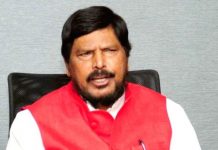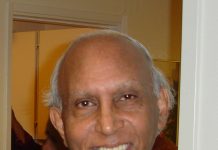 As an engineering student, I copped a lot of grief for refusing to worship at the altar of JRR Tolkien. It wasn’t so much that one didn’t respect the sheer awesomeness of the world the mild-mannered English professor had imagined, but the fact that one couldn’t be bothered to read through thousands of pages of arcane trivia about a non-existent universe in order to parse through a plot that wasn’t gripping enough, didn’t justify the exercise. Fantasy fiction is at its best when it tells us something about the real world. The Lord of the Rings (LOTR) was perhaps the same prescriptive tale of heroism that had turned me off organised religion by then. Tolkien’s trilogy triggered an aversion for the genre — filled mostly by bad imitations of itself.
As an engineering student, I copped a lot of grief for refusing to worship at the altar of JRR Tolkien. It wasn’t so much that one didn’t respect the sheer awesomeness of the world the mild-mannered English professor had imagined, but the fact that one couldn’t be bothered to read through thousands of pages of arcane trivia about a non-existent universe in order to parse through a plot that wasn’t gripping enough, didn’t justify the exercise. Fantasy fiction is at its best when it tells us something about the real world. The Lord of the Rings (LOTR) was perhaps the same prescriptive tale of heroism that had turned me off organised religion by then. Tolkien’s trilogy triggered an aversion for the genre — filled mostly by bad imitations of itself.
So when one says that The Hobbit is as poor an attempt at providing an origins tale to a popular trilogy as The Phantom Menace was, one is perhaps prejudiced by a jaundiced view of Tolkien, but at least there’s an acknowledgement of the possibility of the said prejudice. Peter Jackson’s treatment of what is a very different text from Tolkien’s trilogy is more of the same and is sleep-inducing at best.
One could be charitable and say that his decision to expand the book into a trilogy was because he missed immersing himself in Tolkien’s imagination; others would say he wanted to cash in on it. Whatever be the reason, it fails: at 300 pages,The Hobbit is a tenth of the size of the LOTR books, which means that unlike those films, the challenge for Jackson is to add stuff, rather than remove it. He does this not by adding depth to the characters or playing around with storytelling methods, but by adding extraneous plot and introducing more characters, some of whom appeared in the trilogy but were left out of the films. The perfectly sane, animal loving wizard Radagast, for instance, is metamorphosed into a mushroom-abusing lunatic riding a sleigh driven by rabbits. All right, Sylvester McCoy is awesome (used here in the more commonplace sense) in the role. But there’s also an arc involving an orc with a grudge against the dwarf king Thorin (Armitage, as badass as ever), which is never given any more depth than snarling wargs giving pursuit. This is settled in a double climax, with the all-important war with the goblins from the book, on the sidelines of which Bilbo comes across The Ring, getting second billing to settling this invented rivalry. The end of the battle has been abused as a deus ex machina by Jackson so many times that when the first time Tolkien used it comes around, one says, “Oh, no. Not again.”
The words, “Oh no, not again” work as a refrain during the run time of the film. Jackson is a better technician than a storyteller, and has a limited repertoire of expression. The Hobbit is different from the trilogy in its lightheartedness, but that is because it was primarily a children’s story. However, there’s not much difference when it comes to the grammar of the film; why change a successful style just to please an insignificant critic? It feels like a fourth film, which has positives, especially if you’re a sucker for the New Zealand countryside, but also negatives — such as the fact that it feels like a fourth film.
Ajachi Chakrabarti is a Correspondent with Tehelka.
ajachi@tehelka.com












